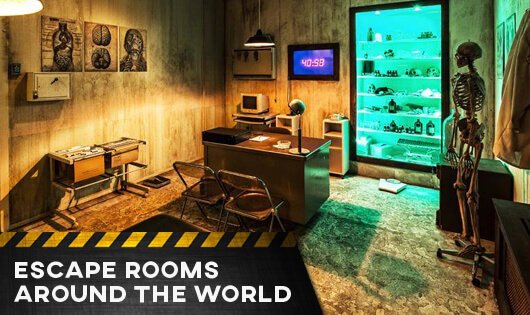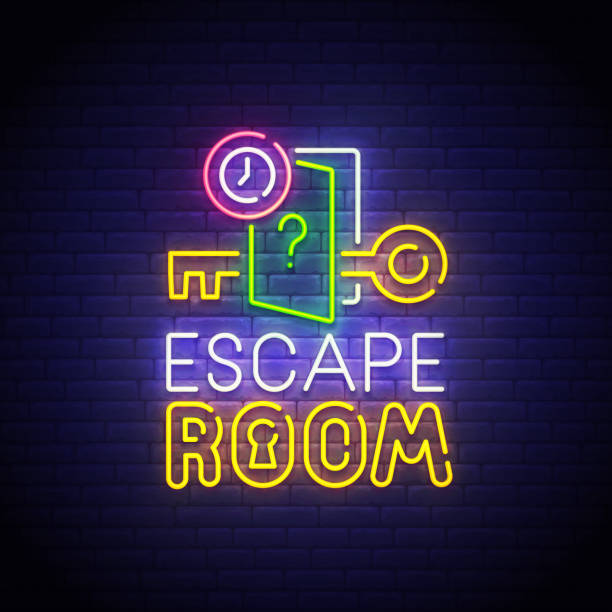Are You Up for the Challenge? Attempt the Escape Room Seattle WA Today!
Are You Up for the Challenge? Attempt the Escape Room Seattle WA Today!
Blog Article
Challenge Your Mind With Our Intriguing Escape Room Puzzles and Clues
Embarking on an escape room adventure uses a diverse experience that blends cognitive obstacles with immersive narration. Each room, diligently crafted with one-of-a-kind themes, attracts participants into a globe where logic, observation, and physical puzzles converge.
The Art of Puzzle Layout
The art of challenge layout in escape areas is a thorough and innovative procedure that calls for a deep understanding of both cognitive and psychological involvement. Crafting a successful problem entails stabilizing intricacy with solvability, making certain that participants continue to be challenged yet not overwhelmed. This equilibrium is vital, as it cultivates a sense of success and promotes ongoing involvement.
Problem developers have to consider numerous cognitive skills, such as pattern recognition, deductive thinking, and spatial understanding. These components need to be interwoven flawlessly within the narrative of the escape area, boosting the immersive experience. Psychological interaction is equally crucial; challenges must evoke curiosity, enjoyment, and occasional aggravation, motivating individuals to stand firm and eventually be successful.
Interest to information is extremely important. Every clue, prop, and mechanism needs to be carefully created and checked to make sure capability and comprehensibility within the storyline. Designers often repeat on their creations, including feedback from examination teams to refine trouble degrees and remove obscurities.

Types of Escape Room Challenges
Comprehending the intricacies of challenge layout normally results in an exploration of the diverse sorts of challenges encountered in escape areas. These challenges can be extensively categorized into physical puzzles, reasoning puzzles, and observational problems, each offering special kinds of engagement and cognitive excitement.
Physical problems call for individuals to engage with their atmosphere, commonly including tasks such as assembling objects, controling systems, or uncovering hidden areas. These challenges involve responsive senses and spatial thinking, urging synergy and hands-on analytic.
Logic problems, on the various other hand, need logical thinking and pattern acknowledgment. Individuals may be charged with deciphering ciphers, addressing mathematical problems, or locating links in between apparently unassociated hints - best escape room. These problems are designed to examine the gamers' deductive thinking and intellectual expertise
Empirical challenges rely upon keen focus to information. Gamers need to inspect their surroundings to recognize refined tips, disparities, or hidden messages. These difficulties often require an eagle eye and a capacity to view links that may overlook.
Strategies for Success
Attaining success in retreat areas calls for a thoughtful mix of method and collaboration. Teamwork is extremely important; gamers need to leverage their collective staminas to resolve complex puzzles effectively. Dividing jobs according to private abilities can streamline the procedure-- those with a flair for pattern recognition can deal with visual challenges, while sensible thinkers tackle puzzles and series.
Effective interaction is another keystone of success. Sharing explorations immediately stops copied initiatives and guarantees everyone continues to be on the exact same page. Using a main area to put found things can visite site help track progression and prevent missing essential clues.
Time administration is similarly critical. Allocate a particular quantity of time to each challenge, staying clear of extended concentrate on any kind of solitary difficulty. If progress stalls, looking for or changing problems help from teammates can give fresh perspectives.
It's likewise beneficial to acquaint oneself with usual retreat area themes and puzzle types in advance. Comprehending potential challenge styles, such as ciphers or lock combinations, can expedite analytical.
Lastly, keeping a positive and made up mindset under stress can dramatically impact efficiency. Anxiety can shadow judgment, so maintaining tranquil makes sure clear reasoning and effective cooperation, causing a higher chance of effectively getting away.

Advantages of Escape Rooms
Taking part in getaway spaces uses a wide variety of advantages that expand past plain entertainment. These immersive experiences work as a durable system for establishing crucial reasoning and analytic skills. Participants are required to evaluate clues, identify patterns, and design options under time restraints, cultivating psychological dexterity and cognitive versatility.
Furthermore, getaway areas are an effective tool for enhancing synergy and interaction. The collective nature of these activities necessitates reliable communication and coordination amongst team members. This setting encourages participants to verbalize their thoughts plainly, pay attention proactively, and work synergistically towards a typical objective, therefore strengthening social abilities.
Moreover, retreat spaces give an exceptional avenue for anxiety alleviation and psychological renewal. The gripping nature of the obstacles allows people to divert their focus from everyday stressors, advertising a sense of success and wellness upon resolving the puzzles. This can bring about boosted mental wellness and enhanced performance in other areas of life.
Last but not least, these experiences typically require creativity and ingenuity, which can convert into ingenious analytic capacities in specialist setups. By participating in retreat spaces, individuals can sharpen a varied skill set that applies in different real-world situations, making them a valuable addition to any individual or specialist development plan.
Popular Themes and Circumstances
Looking into the diverse world of getaway areas reveals a myriad of prominent themes and situations that astound individuals and enhance the immersive experience. Amongst the most precious styles are those that move players into historical durations or sensational worlds. As an example, old Egyptian burial places, middle ages castles, and pirate journeys are seasonal favorites, enabling individuals to address puzzles within richly in-depth setups that evoke a sense of adventure and discovery - escape room in seattle.
One more common style is the secret and investigator category, where players find themselves in the role of sleuths solving a crime or discovering secrets. These scenarios frequently feature elaborate stories and a series of interconnected hints that require eager monitoring and deductive reasoning to unwind.
Furthermore, sci-fi and scary motifs hold considerable charm, making use of the intrigue of advanced technology or the adventure of navigating haunted residences and laboratories. These situations often include special impacts and advanced advice props, enhancing the realistic look and tension.
Last but not least, lots of retreat spaces attract inspiration from prominent culture, developing experiences based on precious books, films, or TV programs. This can engender a feeling of familiarity and exhilaration, as participants involve with situations that admire their preferred stories.
Final Thought
The intricate style of retreat room problems and hints offers an one-of-a-kind blend of cognitive obstacles and immersive storytelling. By participating in various kinds of physical, logical, and observational problems, participants improve essential thinking and team effort abilities. Employing efficient approaches improves the overall experience, highlighting the complex benefits of getaway areas. Popular circumstances and motifs better enrich the experience, making getaway areas a academic and compelling activity for boosting psychological skill and problem-solving capabilities.
Each space, diligently crafted with one-of-a-kind motifs, draws individuals into a world where logic, monitoring, and physical problems merge.The art of problem layout in retreat areas is a thorough and creative process that requires a deep understanding of both cognitive and psychological involvement. Crafting a successful puzzle includes stabilizing intricacy with solvability, making More hints sure that individuals continue to be tested yet not bewildered. The engrossing nature of the difficulties allows individuals to divert their emphasis from everyday stressors, promoting a feeling of achievement and wellness upon resolving the puzzles.The detailed design of retreat space challenges and clues supplies a distinct blend of cognitive challenges and immersive narration.
Report this page